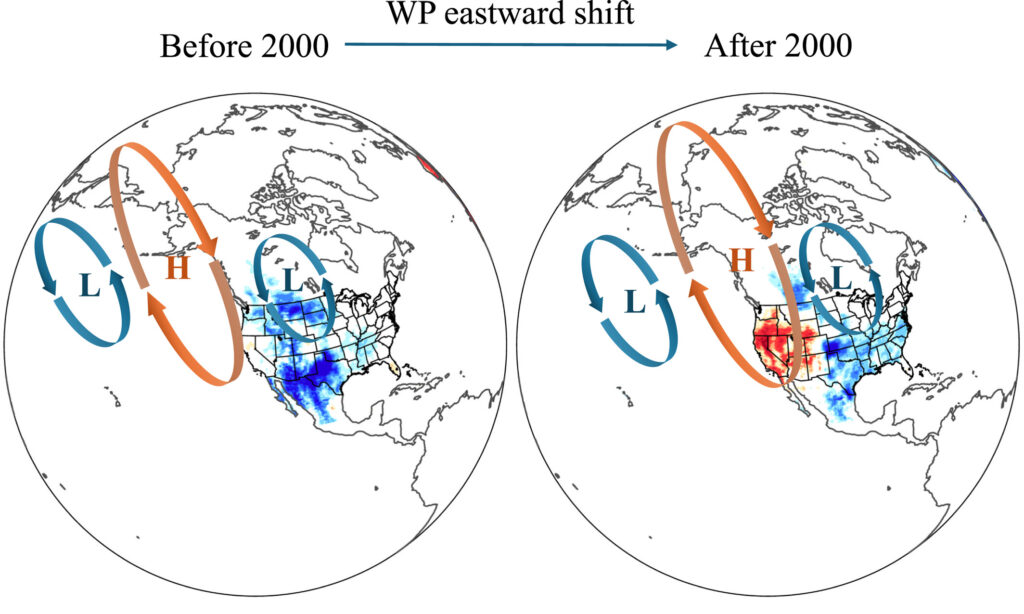Editors’ Highlights are summaries of recent papers by AGU’s journal editors.
Source: Earth’s Future
Wildfires pose an increasing threat to communities, infrastructure, health, air quality, and ecosystems in the western United States. Climatic factors including precipitation, temperature, and humidity contribute to the likelihood and severity of wildfires, meaning that interannual variability in climate patterns can influence seasonal fire risk.

Liu et al. [2024] identify a climatic oscillation, the West Pacific pattern, that explains up to one-third of interannual variability in western U.S. wildfires during the autumn season since 2000. Using a combination of observations, reanalysis, and climate model simulations, they show that the West Pacific pattern has shifted eastward since 2000, driving a correlation of the pattern with high pressure, warmer temperatures, lower humidity, and ultimately fire weather and wildfire burned area during the autumn season. These results have the potential to improve seasonal prediction of wildfire risk in the region. by identifying a climate pattern that explains a significant amount of interannual variability in autumn fire weather.
Citation: Liu, S., Hu, S., & Seager, R. (2024). The West Pacific teleconnection drives the interannual variability of autumn wildfire weather in the western United States after 2000. Earth’s Future, 12, e2024EF004922. https://doi.org/10.1029/2024EF004922
—Benjamin Sulman, Associate Editor, Earth’s Future

